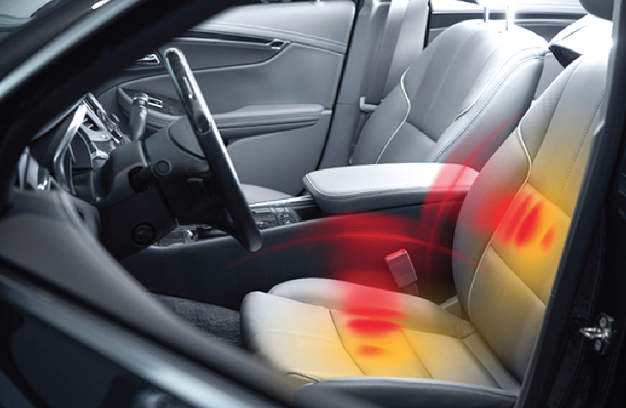
A look at heated seats
When you cast your eyes around our busy streets, you would see a lot of imported (second-hand) cars, most of whom have been brought in from the US and Canada. Most of these cars are equipped differently from other cars that are earmarked specifically for our tropical market.
Advertisement
The North American imports often come loaded with features that are most certainly not needed in our tropical, humid environment, for example, heated seats and heated steering wheels.
These are features that are unlikely to be of use to a driver here, but an understanding of how they work is still in order.
Seat warmers, which were first introduced by Cadillac in 1966 to deal with backaches, are often thought of as a luxury item and are most often included in high-end cars.
These seat warmers heat up the seat with the push of a button, and in some vehicles, just the bottom of the seat warms up, whereas in others, both the bottom and back warm up.
Heated seats can make driving cars much more comfortable during cold winters, or for those who get cold on summer nights. In some cases, the seat warms up before the rest of the vehicle does. There have been people who have been burned by seat warmers, but this is not too common.
There is a myth of car seat warmers out there, which claims that these warmers can cause haemorrhoids, but it has been proven that neither do they create this condition, nor do they make it worse if already present.
The actual technology behind heated seats, however, is no different than that used in electric blankets, hair dryers, water heaters and anything else that uses electricity to produce heat. They are powered by a heating element (a long strip of material that functions as a resistor).
When electric current flows through it, the energy is turned into heat, which flows through the seat, warming the rider.
As with the lights in your car, the heated seats are controlled by a type of switch called a relay. A relay allows a small electric current to control a much larger one.
When the switch is flipped to turn on the seat heater, a small current flows through a coil in the relay. Near this coil is an open switch.
When current flows through the coil, it creates a magnetic field, which pulls the switch closed. This completes a circuit, sending electricity from the car battery to the seat cushion heating element.
The audible click you can hear in some cars when you turn on the seat heater is that of the relay closing.
The longer the seat cushion stays on, the hotter it gets. If it were to stay on for too long, it would get hot enough to become uncomfortable or even dangerous to sit in. It could even start a fire in the cushion.
To prevent this, most car seat heaters have a thermostat. The thermostat measures the temperature in the cushion. When it reaches a certain temperature, the thermostat sends a signal, automatically turning off the relay until the seat cools down a bit.
At that point, the thermostat turns the relay back on again. Many seat cushions also have "High" and "Low" settings that let the driver control the temperature of the seat cushions.
Repairs on car seat warmers vary from different types of vehicles. Sometimes the heating element burns out, necessitating a replacement of the entire system.
The heating element is attached to the upholstery so it is a big job that needs to be done by a qualified and experienced professional.
Car seat warmers are indeed nice to have whenever the weather is cool or bordering on cold and uncomfortable. With the heat close to your body, you will warm up faster and feel more comfortable on those early morning or late night drives.
Next week, we will look at ventilated, or air-conditioned, vehicle seating systems.



